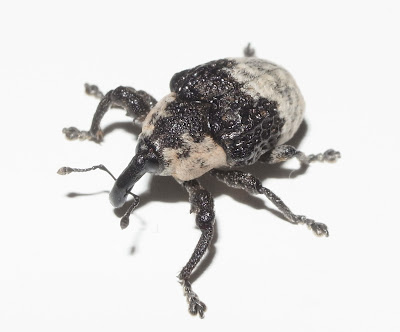Eisner's Visit to Japan
--- A story of a world-famous entomologist and his friendship with Japanese colleagues
▲The specimen of Parnassius citrinarius collected by C. Eisner
(preserved in RIEB)
▲Data label of the above specimen (preserved in RIEB)
On a sunny day of early summer in 1961, an entomologist whose name was well known all over the world visited Mie Prefecture, western Japan. The entomologist was
Mr. Curt Eisner (1890-1981), a prosperous Jewish business man and earnest butterfly enthusiast focusing on Parnassius. He was considered the leading world authority on parnassian butterflies, which he collected and of which he named many. His “Parnassiana Nova” series are still important literature. His huge collection of Parnassius is now stored in the Rijksmuseum van Naturlijke Historie in Leiden, Netherlands.
Throughout his life, he exchanged specimens with many overseas colleagues including Japanese. In this process, he learned that there is an interesting Parnassius species in Japan. The species,
Japanese Clouded Apollo (Parnassius citirinarius) is quite unique in its wing markings because it does not have any red or blue spots as many other Parnassius species do. By studying the materials which he obtained from Japanese colleagues, he described
a new subspecies of Parnassius citirinarius, ssp. janine in 1959. (cf. p161-162 in the link) This subspecies was named after his niece. Now this subspecies is treated as a synonym of nominotypical subspecies.
Through this work, he got interested in this species and planned to visit Japan and collect it by himself. His plan was carried out in May 1961. He was already over 70 but climbed up mountains to get the species. Thanks to the assistance from Japanese colleagues, he succeeded in collecting enough specimens.
▲Mr. Curt Eisner collecting at Mt. Fujiwara-dake, Mie Pref. JAPAN [May, 1961](preserved in RIEB)
At RIEB (The Research Institute of Evolutionary Biology) where our secretariat is housed, there are some specimens from Eisner’s collection together with his photos and letters. Those references remind us of his friendship with Japanese colleagues.
▲Thank you letter sent from Mr. Eisner after his return home (preserved in RIEB)
Mr. NAKAMURA Makoto who was one of Eisner's Japanese friends wrote an short essay on his memory of Eisner in our journal. (sorry text is in Japanese only)
Nakamura, M., 2003. My memory of Mr. Eisner's visit to Japan. Butterflies 36: 53-56.



















































